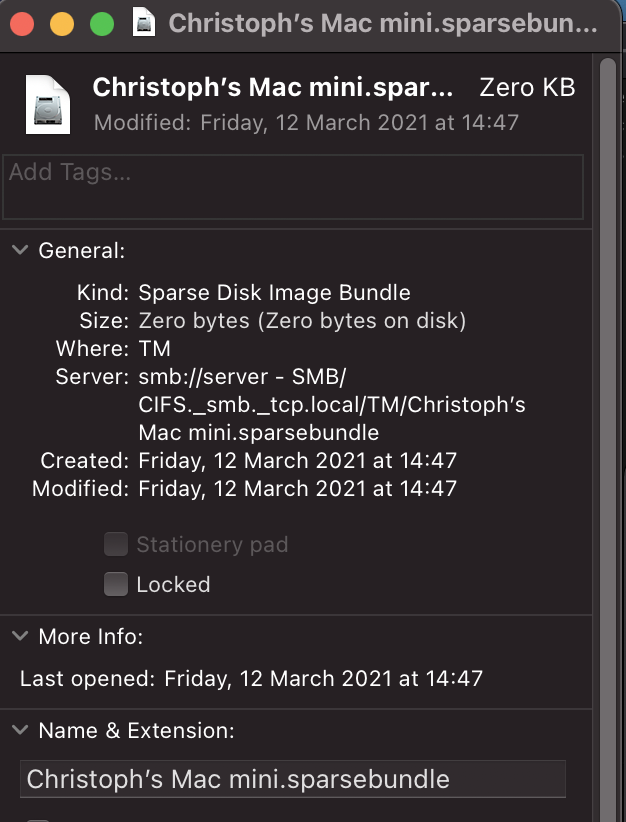

However, you can also specify a smaller size if you (like me) want to create a hard limit for the amount of space your Time Machine backups will take on your network drive. The -size parameter can probably be as large as you want, now that Apple has evidently fixed the sparsebundle issues that were causing all but the most recent backup to be dumped.


The most common format for a Time Machine backup disk is Mac OS Extended format (Journaled) format, but Time Machine also supports Mac OS Extended (Case-sensitive, Journaled) and Xsan formats. Types of disks you can use with Time Machine on Mac backupdb file when backing up to an external hard disk: sparsebundle disk images, which could potentially be used to 'coerce' Time Machine into not directly creating a. Manually creating a sparsebundle disk image it may just be more useful to manually create the sparsebundle image ourself (see below). There are a few tricks/hacks/workaround for creating a local TimeMachine backup, which can then be transferred to a NAS, and used for a networked TimeMachine backup.īoth of these seem to be kind of hacky workarounds for ways to get an appropriate sparsebundle created, using that locally to perform the first backup with TimeMachine, then moving it to a NAS/server to continue making future backups over the network. Hacky ways to speed up initial Time Machine backup on NAS The good news is that in the process of making the new sparse bundle, its contents are thoroughly cleaned up and compacted better than the separate compact command can achieve.
How to open a mac os sparsebundle free#
As this involves writing out a whole new sparse bundle and copying the contents across from the old one, you’ll need sufficient free space on a disk to be able to do this. You can change band size later if you need. The smaller you make the bands, the more efficient the sparse bundle’s use of storage space will be, as it can add (or remove) bands to accommodate changes in size. You can then choose any band size from the critical upwards. That’s the smallest band size which will keep the total number of bands below 50,000. Divide that by 50,000 and you should get a critical band size of 22 MB. It’s best to do this in consistent units such as MB: if your sparse bundle could reach 1.1 TB, that’s 1,100 GB, or 1,100,000 MB. Calculate that by dividing the absolute maximum size that your sparse bundle might reach (even after resizing) by a number smaller than 100,000, such as 50,000. The simplest way to approach this is with a critical band size. So whatever you do, ensure that your sparse bundle will never need 100,000 or more band files, which could spell disaster. Currently, in macOS with HFS+ or APFS, that critical number is believed to be 100,000. If the number of bands reaches the maximum for a single folder for the host file system, then it will start to fail, and you could lose part or all of its contents. All the bands of a sparse bundle are stored inside a single folder. There’s one important limit to bear in mind when setting band size. Some more useful blog posts related to sparsebundles and similar: (Install macOS Mojave virtual machine with Parallels Desktop)Īnd while it's not TimeMachine related, I recently discovered SuperDuper and how it can make bootable macOS backups, which could be a useful thing (potentially combined with restoring from an old TimeMachine backup, then creating a bootable backup from that?):.With Parallels we can create a new macOS virtual machine (VM), and then potentially we could 'restore' a TimeMachine backup to that VM: If you're wanting to 'Transfer Time Machine back-ups from one back-up disc to another': There's also a lot of useful info about tmutil's capabilities at the following link: In particular, I located another method using tmutil restore at the following link:

Note: the methods listed in the original article may not be the best/most up to date methods anymore. See the Disqus comments (copied below) for a number of useful references/updates.


 0 kommentar(er)
0 kommentar(er)
